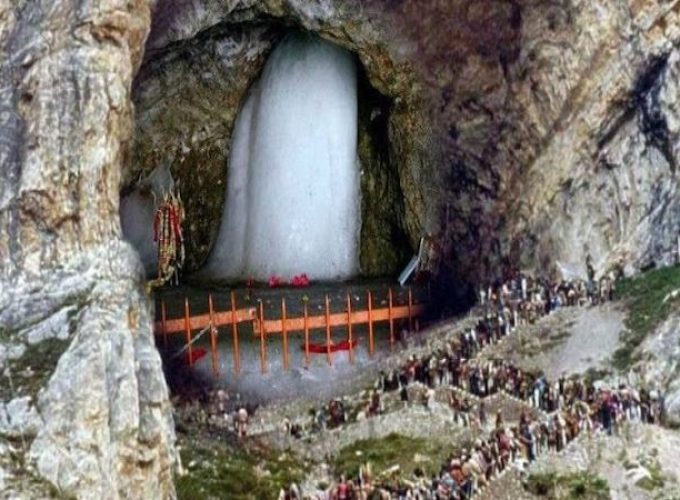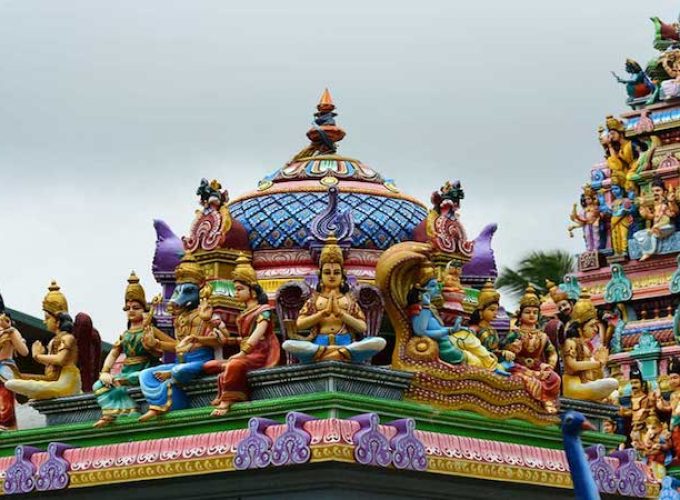Amarnath – Shiva, in the form of a lingam, is formed naturally of an ice – stalagmite One of the holy trinity, Shiva is a living god. The most ancient and sacred book of India, the Rig Veda evokes his presence in its hymns. Vedic myths, ritual and even astronomy testify to his existence from the dawn of time
Amarnath – One of the holy trinity, Shiva is a living god. The most sacred and most ancient book of India, the Rig Veda evokes his presence in its hymns, Vedic Myths, rituals and even testify to his existance from the dawn of time. Legend has it that Shiva recounted to Parvati the secret of creation in a cave in Amarnath. Unknown to them, a pair of doves eavesdropped on this conversation and having learnt the secret, are reborn again and again, and have made the cave their eternal abode. The annual yatra to Holy Amarnath Cave, situated at 14000 ft. above sea level, is organised by the Jammu & Kashmir State Government during the month of July and August. The intending pilgrims are allowed to perform darshan from Ashard Purnimashi to Shravan Purnimashi which course spreads over a month or so.
Amarnath Yatra Procession:
Amarnath is an important centre of hindu pilgrimage and though the route is as difficult to negotiate as it is exciting, every year, thousands of devotees come to pay homage before Shiva in one of his famous Himalayan abodes.
Situated in a narrow gorge at the farther end of Lidder valley, Amarnathji stands at 3,888 m and is 45 km from Pahalgam and 141 km from Srinagar. Though the original pilgrimage subscribes that the yatra be undertaken from Srinagar, the more common practice is to begin the journey from Pahalgam, and cover the distance to Amarnathji and back in four or five days. Pahalgam is 96 km from Srinagar.
Since the base point for the pilgrim’s trek is picturesque Pahalgam, a large tented township springs up to accommodate the pilgrims. All intermediate halting places have the same kind of facilities as are provided at Pahalgam, and a Yatra Officer is appointed to conduct the pilgrimage.




